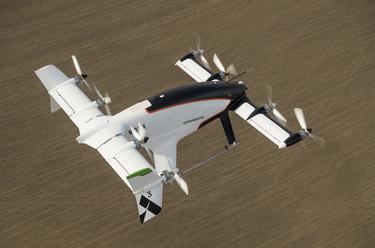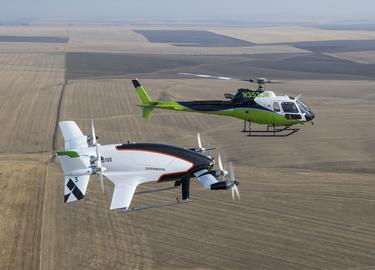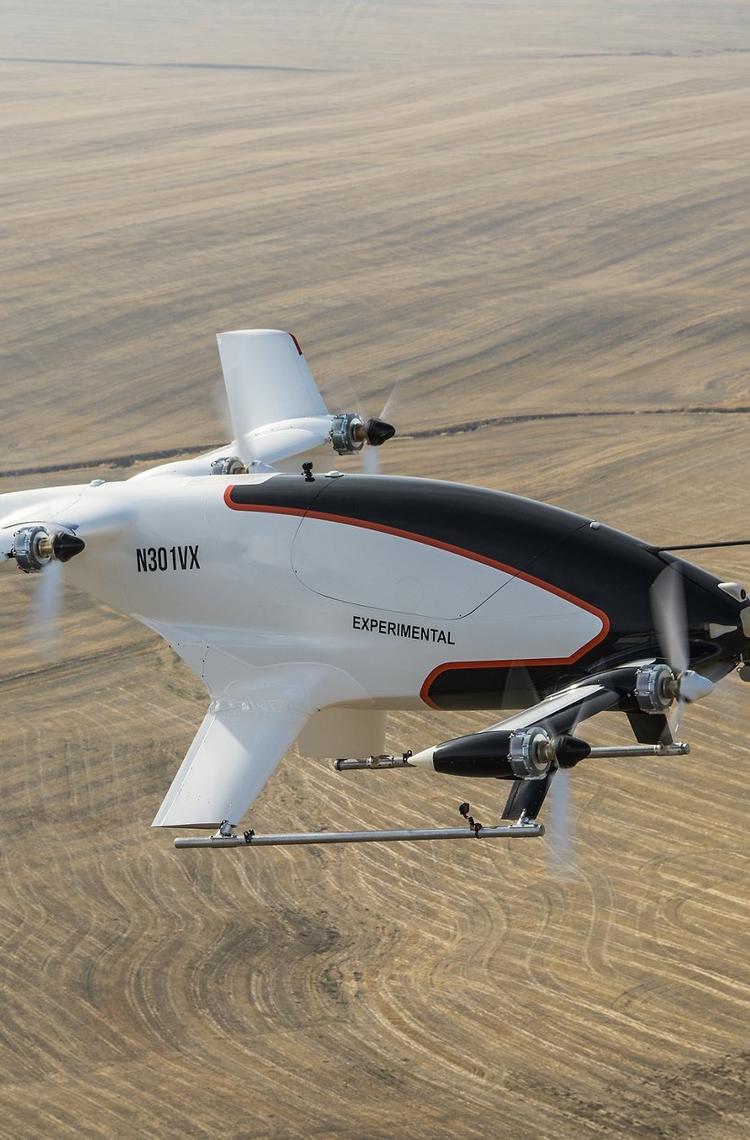Nearly four years after the Vahana concept was sketched on a napkin, the flagship programme that launched the urban air mobility initiative at Airbus has come to a close. Vahana’s key learnings are now providing Airbus Urban Mobility with invaluable insight on the design of its future urban air vehicle.
“It all started with a sketch on a napkin…” The Vahana story— when told by project team members—often starts this way. Some tell the story with a hint of wonder, others with a tinge of nostalgia.
Indeed, Vahana is a legend in its own right. And it is not hard to see why: a design that looked pulled from a sci-fi movie has quietly transformed into a fully operational electric vertical take-off and landing (eVTOL) vehicle in only a few short years.
The early sceptics can be forgiven: 2016 was a different time. Back then, no one could have predicted that leveraging the sky to improve urban mobility was practical. And yet, urban air mobility is no longer the stuff of science fiction. Today, it is one of the most exciting and promising markets in aerospace. And the extraordinary progress of Vahana has undoubtedly played a key role in bringing this vision closer to reality.
Learnings from both aircraft—Vahana and CityAirbus—will be used to advance our relationship with regulators and to understand key technologies.
Zach Lovering, VP of UAM Systems, Airbus
But, as the saying goes, all good things must come to an end. For Vahana, that day has come. On 14 November 2019, the final page of the Vahana story was written at the Pendleton UAS Range in Oregon, USA. Here, Vahana took its final test flight to the cheers (and some tears) of all those who have closely contributed to its extraordinary development.
Now as the dust settles on Vahana’s final flight, the next chapter in urban air mobility at Airbus is already taking shape.

A rich reservoir of key learnings on eVTOL technologies
From the outset, Vahana was designed as a technical demonstrator project. In the R&D community, “technical demonstrators” are commonly used to test high-potential technologies and to support their transfer to real-world applications. In other words, Vahana was never intended to become a commercialised product—instead, the Vahana team based at Acubed in Silicon Valley was tasked with important objectives relating to eVTOL development.
Zach Lovering, VP of UAM Systems at Airbus and head of Vahana, highlights the programme’s three main objectives:
-
Designing a fully operational eVTOL vehicle: A sketch on a napkin is one thing, but proving the technical viability of the configuration is quite another. The project team pushed its idea of a tilt-wing configuration with a suitable battery-to-electric-motor solution to the limits. When Vahana took its first flight in 2018, the leap from concept to reality was a success.
-
Proving the viability of self-piloting technologies: Vahana was launched at a time when real-time detect-and-avoid capabilities on small aircraft were considered a pipedream. Today, Vahana is fully capable of autonomously detecting airborne and ground hazards. The project was thus instrumental in helping to de-risk core elements of autonomy for urban air mobility vehicles and gave rise to Wayfinder, an ambitious autonomous flight technology project at Acubed.
-
Developing an eVTOL business case: What is the total operating cost of eVTOLs? How does it compare to traditional helicopters or taxis? What is the value for the community? How should they be certified? All of these questions need to be ironed out to create a compelling business case. And Vahana offers rich learnings in this respect.

The future is friendly for urban air mobility
Now that the Vahana programme has been completed, the project team is looking forward to applying the lessons learned to the future urban air vehicle at Airbus. And they will be in good company: the project team for CityAirbus—the second eVTOL demonstrator in the Airbus portfolio—will continue its flight test campaign throughout 2020 to be able to bring fresh insight to the concept development table.
“It’s bittersweet to see Vahana come to an end,” says Zach, who expressed his thoughts in a blog post. “But learnings from both aircraft—Vahana and CityAirbus—will be used to advance our relationship with regulators and to understand key technologies.”
Although precise timelines for the future vehicle are still to be determined, work on the new design has already begun. Airbus Urban Mobility is tasked with taking the lead on this front.
For the time being, one of the two Vahana “Alpha” aircraft will head to Acubed to act as inspiration for future ground-breaking projects. The other will make an appearance at the 2020 HAI Heliexpo in Anaheim, California.
